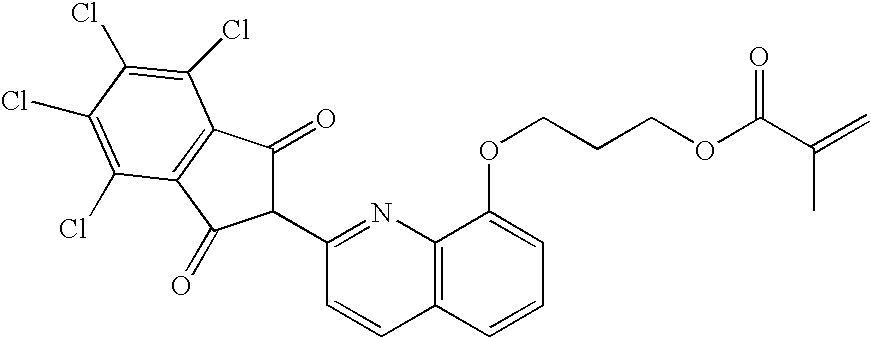Colored curable composition, colored pattern and color filter using the same
a color curable composition and color filter technology, applied in the direction of photomechanical treatment originals, instruments, photomechanical equipment, etc., can solve the problems of large amount of development residue (residue) on the substrate, foreign matter defects in the panels obtained therefrom, and complicated process on the coating device sid
- Summary
- Abstract
- Description
- Claims
- Application Information
AI Technical Summary
Benefits of technology
Problems solved by technology
Method used
Image
Examples
example 1
[0328]Sinter dried table salt (made by Ajishokuken Co., Ltd. (trade name: SOFT SALT S-50), Mg content 0.03%, moisture content 0.11%) was pulverized by a high velocity rotary mill (trade name: ACM-10A, made by Hosokawa Micron Corporation). When the particle size distribution of the pulverized salt was measured using a MICROTRAC particle size analyzer (trade name, made by Nikkiso Co., Ltd.), the volume basis median particle size was found to be 6.2 μm, and the 95 percentile particle size was found to be 12.8 μm. When the pulverized salt was observed with a scanning electron microscope, the salt particles were seen to have an angular shape with rough surfaces. 1000 parts of the obtained pulverized salt, 100 parts of ε-crystal form copper phthalocyanine pigment (C.I. Pigment Blue 15:6, made by Toyo Ink Manufacturing Co., Ltd. (trade name:Lionol Blue E)), and 110 parts of diethylene glycol were introduced into a 1-gallon kneader (made by Inoue Manufacturing Co., Ltd.), and mixing and kne...
example 2
[0337]The colored curable composition (color resist liquid) of Example 2 was prepared in a similar manner to that of Example 1, except the amount of addition of the dispersion resin C added when preparing the pigment dispersion composition in Example 1 was changed to 5 parts. The contact angle of the dried coated layer of the colored curable composition of Example 2 with water, measured as in Example 1, was found to be 70°. When the surface roughness of the dry coated layer was measured in a similar manner the surface roughness was found to be 3 nm.
PUM
| Property | Measurement | Unit |
|---|---|---|
| contact angle | aaaaa | aaaaa |
| surface roughness | aaaaa | aaaaa |
| particle size | aaaaa | aaaaa |
Abstract
Description
Claims
Application Information
 Login to View More
Login to View More - R&D
- Intellectual Property
- Life Sciences
- Materials
- Tech Scout
- Unparalleled Data Quality
- Higher Quality Content
- 60% Fewer Hallucinations
Browse by: Latest US Patents, China's latest patents, Technical Efficacy Thesaurus, Application Domain, Technology Topic, Popular Technical Reports.
© 2025 PatSnap. All rights reserved.Legal|Privacy policy|Modern Slavery Act Transparency Statement|Sitemap|About US| Contact US: help@patsnap.com



